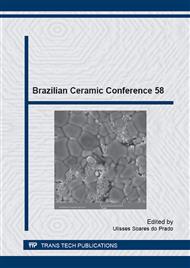p.378
p.384
p.393
p.399
p.405
p.411
p.419
p.425
p.432
Evaluation of the Hydrophobicity on Silicon Rubber Coating with Loads of Alumina Trihydrate and Nanosilica for Use in Electrical Insulation Coatings
Abstract:
This study aims to evaluate the hydrophobicity of vulcanized silicone rubber coatings at room temperature (RTV SR) with loads of alumina trihydrate (ATH) and nanosilica (NS) in the polymeric silicone rubber matrix, in order to obtain coatings ATH/NS/RTV SR to cover the surface of glass electrical insulators. The coatings were characterized by scanning electron microscopy (SEM), testing in salt spray chamber, loss test and recovery of hydrophobicity. These coatings showed varying sizes of agglomerates and heterogeneous distribution of particles within the matrix RTV SR. In the test in salt spray chamber smaller leakage current values was observed for the insulator coating with the ATH/NS loads. In the loss and recovery of the hydrophobicity test the best result was observed for insulating load RTV SR / 20: 1 (ATH: NS).
Info:
Periodical:
Pages:
405-410
Citation:
Online since:
June 2015
Price:
Сopyright:
© 2015 Trans Tech Publications Ltd. All Rights Reserved
Share:
Citation:


